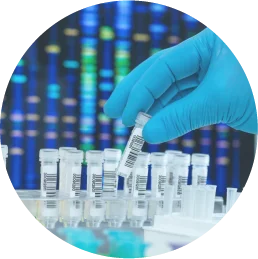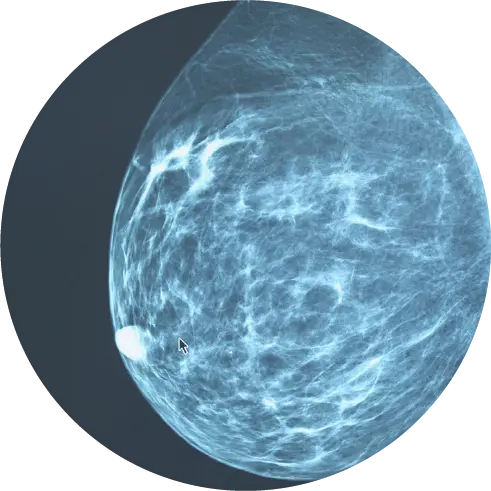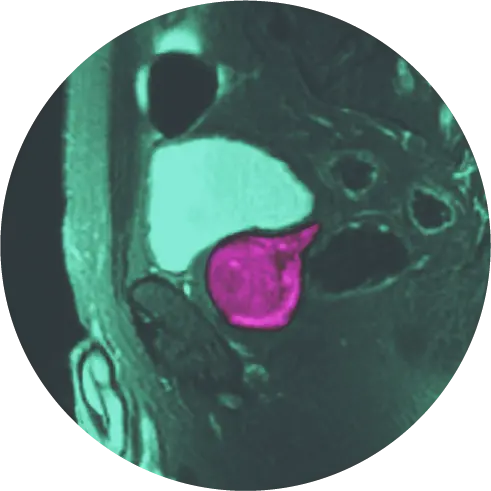What we know about breast cancer – and how to treat it – grows each day.
With routine breast screenings and advances in technology, the disease can be detected, diagnosed, and treated sooner.
Still, there are times when breast cancer spreads to other parts of our bodies. How does this happen and what are the symptoms?
The Basics of Breast Cancer
Let’s talk about the basics of breast cancer first.
Breast cancer occurs when abnormal cells form in breast tissue. Early detection of breast cancer has helped with early diagnosis and treatment and improved patient survival rates.
But in some cases, the cancerous cells in the breast can invade other parts of the body. The term used when this spreading happens is metastatic breast cancer – also called stage 4 breast cancer.
Oncologists typically check for any evidence of metastasis when they make an initial diagnosis. Sometimes, the cancer can spread after the diagnosis, so doctors often recommend imaging scans during and after treatment.
How Does Breast Cancer Spread?
Breast cancer spreads when abnormal cells multiply and enter surrounding healthy tissue. First, the cancerous cells move into other parts of the affected breast and then spread through a series of steps:
- move through the walls of nearby lymph nodes or blood vessels,
- travel through the lymphatic system and bloodstream to other parts of the body,
- invade blood vessel walls and move into the surrounding tissue,
- grow in this tissue until a tumor forms, and
- cause new blood vessels to grow, establishing a blood supply that allows the metastatic tumor to continue growing.1
From their initial entryway into the lymphatic system, breast cancer cells typically form tumors in the lungs, bones, liver, or brain.
Researchers have found that metastatic cancer cells are similar to primary cancer cells but not like the cells that would originate in the organ where the metastatic cancer is found. So, if breast cancer spreads to another part of the body, it’s still considered breast cancer. For example, doctors classify cancer that has spread from the breast to the lungs as breast cancer, not lung cancer.
Sometimes, doctors can’t tell where metastatic cancer has originated. This type of cancer is called cancer of unknown primary origin (CUP).2
What are the Signs that Breast Cancer has Spread?
Metastatic breast cancer doesn’t always cause symptoms. When symptoms do occur, they depend on the location of the metastatic tumors and their size.
Some typical signs of metastatic cancer include:
- shortness of breath or difficulty breathing when cancer spreads to the lung,
- pain and fractures when breast cancer spreads to the bones,
- jaundice or swelling in the belly area when cancer spreads to the liver, and
- headache, dizziness, or seizures when breast cancer spreads to the brain.3
If your doctor suspects your breast cancer has spread, they’ll evaluate your symptoms and then may order various tests, including one or more of the following:
- chest X-ray,
- bone scan,
- CT (computed tomography) scan,
- MRI (magnetic resonance imaging) scan,
- ultrasound, or
- PET (positron emission tomography) scan.
How is Metastatic Breast Cancer Treated?
When breast cancer spreads to other parts of the body, doctors often recommend systemic treatment, which can kill abnormal cells in multiple locations. In some cases, they may recommend surgery.
To help determine treatment options, doctors identify five stages in diagnosing breast cancer.
Stage 0. Stage 0 cancer is considered noninvasive, meaning there’s no evidence of the cancer cells or other abnormal cells breaking out of the part of the breast in which they started or invading neighboring healthy tissue. This stage is highly treatable.
Stage 1. Stage 1 breast cancer is considered invasive but localized. There are two types of a stage 1 diagnosis. In stage 1A, the tumor is smaller than 2 cm and hasn’t spread to the surrounding lymph nodes. In stage 1B, the lymph nodes may have tiny groupings of cancer cells that measure between 0.2 and 2 mm. This stage also is highly treatable.
Stage 2. Stage 2 cancer is invasive and is divided into 2A and 2B types. With stage 2A, there may be no tumor, but the cancer has spread to nearby lymph nodes. Or, the tumor might be less than 2 cm in size and involve the lymph nodes. Alternatively, the tumor may measure between 2 and 5 cm but has not spread to the lymph nodes.
In stage 2B, the tumor size is between 2 to 5 cm, and the cancer has spread to four or fewer lymph nodes. Or, the tumor might measure more than 5 cm with no lymph node spread. Stage 2 breast cancer is treatable, and the prognosis is often promising.
Stage 3. This cancer is considered invasive and advanced. It’s divided into 3A, 3B, and 3C forms. In stage 3A, the tumor may be less than 2 cm, but four to nine lymph nodes are involved. Or, tumor size may be greater than 5 cm and involve small groups of cells in your lymph nodes. The cancer may have spread to the lymph nodes in the underarm and breastbone.
In stage 3B, the tumor can be any size and has spread into the breastbone or skin, affecting up to nine lymph nodes. In stage 3C, the cancer may have spread to 10 or more lymph nodes even if a tumor is not present. The affected lymph nodes may be near the collarbone, underarm, or breastbone.
At this stage, treatment options include a combination of the following:
- mastectomy,
- radiation,
- hormone therapy, and/or
- chemotherapy.
Stage 4. Stage 4 breast cancer has spread to other body parts (metastasized). The cancerous cells may be found in one or more of the following locations:
- brain,
- bones,
- lungs, and/or
- liver.
Although cancer research is achieving many promising breakthroughs, there remains no cure for stage 4 cancer. Treatments for this stage focus on extending and improving your quality of life.
Treatment at this stage includes the following:
- chemotherapy,
- radiation therapy,
- surgery,
- hormone therapy,
- targeted therapy,
- clinical trials, and/or
- pain management.4
About one-third of women diagnosed with metastatic breast cancer in the U.S. live at least five years after diagnosis. Some women may live 10 or more years beyond a stage 4 diagnosis.5
What’s the Good News?
Your prognosis depends mainly on the stage at which your breast cancer is diagnosed.
But the good news is this: improved screenings and treatments are helping to increase early detection. Breast cancer that’s caught in its early stages is very treatable. And if you have a family history of breast cancer, new genetic testing may be a good fit.
At HALO Diagnostics, we offer breast screenings at our HALO Breast Care Center in Chico, Silicon Valley MRI in Silicon Valley, and Palms Imaging Center in Oxnard, as well as Precision Imaging Centers’ four locations in and around Jacksonville, Florida.
Give us a call today at (904) 996-8100 or schedule your screening online.
References
- National Cancer Institute. (2020). Metastatic cancer: When cancer spreads. Published online November 10, 2020.
- Breastcancer.org. (2022). Metastatic breast cancer: 20 terms you should know. Published online June 29, 2022.
- Breastcancer.org. (2022). Metastatic breast cancer. Published online October 9, 2022.
- Breastcancer.org. (2022). Breast cancer stages. Published online July 27, 2022.
- Susan G. Komen. (2022). Metastatic breast cancer. Published online July 21, 2022.




